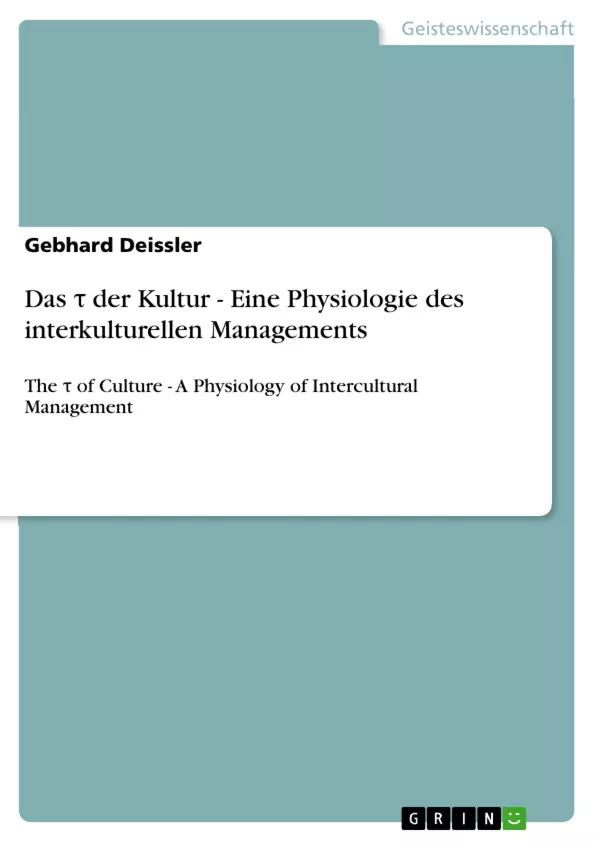On the basis of this holistically-oriented integrative cultural reasoning there is
No cultural diversity but rather a perceptual diversity:
THERE IS NO CULTURAL DIVERSITY
THERE IS, HOWEVER, A DIVERSITY OF THE DEPTH OF PERCEPTION OF EXISTENCE!
The experience of diversity arises as a consequence of a lopsided perception that ignores or refuses to perceive the wholeness of existence referred to metaphorically as the cultural complementarity principle of unity and diversity that has an inkling of the integrality and integrity of creation. The cultural spell under which the world presently is appears therefore as a consequence of perception that is a culture consciousness with limited awareness. Culture seen as such is an act of consciousness. And the type of culture consciousness a player has cocreates the cultural reality within and around him.
From there one may even infer that culture being an act of consciousness based on perception and awareness it cannot be conceived of apart from the human dimension of consciousness. The cultural discourse that fills libraries and the pockets of culture gurus and the lecture halls of universities alike is based on a culture paradigm that cannot have any permanence and sustainable impact on globalization. If it is not enhanced and complemented it can mislead the whole world as fascism and communism have misled the millions and the masses until they were put in their true context and understood more fully. If culture that some assume holds the place of these worldviews and errors of the past at present is not put in its true context likewise it may have the same impact and destiny as those cultural errors. Therefore the present cultural paradigm imperatively requires the correction and completion of its edifice, which is the purpose of the inquiry.
This epistemological perception of culture and cultural diversity does not altogether eclipse the practical value of cultural diversity. The first is helpful in cultural problem solving, the second for evolving. Its dialectics help the world to grow and develop based on the dialectics of diversity. When that causes problems the complementary epistemological perception of culture can be used as a cultural problem solver. So the epistemological and the pragmatic standpoint are the complementary aspects of a culture theory and management practice in accordance with man and his needs. And it does not sacrifice one to the other.
Inhaltsverzeichnis
- Teil 1 ...9
- Das,, +-Modell\" des integralen interkulturellen Managements
- Cross-Cultural Observations...10
- The Enigma of the Cross: Cross, Tau and Tao of Culture ...16
- The Root of Civilisation and the Tree of Life ...27
- The Application of the Metaphor of Metaphors to the World's Cultures and their Integration...33
- The Quantum-Cultural Motive in Creation ...54
- CROSS-Cultural Management ...59
- Cosmic Love ...63
- The Civilisation of Love ...70
- Teil 2 ...75
- Das „,T-Modell\" des integralen interkulturellen Managements
- Cultural Awareness - Kulturelle Bewusstheit...77
- Kulturdefinition
- Die Entstehung des Kulturprofils
- Bewusstseinsarchitektur und Kultur
- Architektur der kulturellen Ebenen in verschiedenen Tiefen
- Die Beziehung zwischen expliziter und impliziter Bewusstseinsarchitektur
- Cultural Knowledge – Kulturelles Wissen ...88
- Kulturmodelle und interkultureller Paradigmenwechsel
- Geert Hofstede (achtziger Jahre)
- Trompenaars und Hampden-Turner (neunziger Jahre)
- Edward T. Hall and Mildred R. Hall (neunziger Jahre)
- Brannen und Salk (2000)
- Der transkulturelle Ansatz (2000+)
- Synopsis interkultureller Managementforschung
- Cultural Skills - Kulturelle Kompetenzen ...110
- 3.1 INTRAPSYCHISCHES PROZESS- UND INTERKULTURELLES KOMMUNIKATIONSMANAGEMENT ...112
- Das ORJI-Modell
- Der MIS-Faktor Prozess
- Die PIE-Metapher
- Multimodellierung intrapsychischer Prozesse
- 3.2 VISUELLE SYSTEMATISIERUNG DER WELTKULTUREN …..126
- Das Balkendiagramm der Weltkulturen
- Das bipolarisierte Kontinuum der Weltkulturen
Zielsetzung und Themenschwerpunkte
Das Buch "Das τ der Kultur" von Gebhard Deißler beschäftigt sich mit der Physiologie des interkulturellen Managements. Es stellt ein umfassendes Modell zur Analyse und Bewältigung interkultureller Herausforderungen vor.
- Die Bedeutung des kulturellen Kontextes für Managemententscheidungen
- Die Analyse und Beschreibung verschiedener Kulturmodelle
- Die Entwicklung interkultureller Kompetenzen
- Die Anwendung von Kulturwissen in der Praxis
- Die Integration von Kultur in die Geschäftsstrategie
Zusammenfassung der Kapitel
Teil 1: Das,, +-Modell\" des integralen interkulturellen Managements
Der erste Teil des Buches führt das +-Modell des integralen interkulturellen Managements ein. Es werden cross-kulturelle Beobachtungen analysiert und die Bedeutung von Kultur für die Zivilisation und das Leben betrachtet. Die Metapher der Metaphern wird als Werkzeug zur Integration verschiedener Weltkulturen vorgestellt, und die Rolle des Quanten-kulturellen Motivs in der Schöpfung wird beleuchtet. Die Kapitel behandeln außerdem Themen wie CROSS-Cultural Management, kosmische Liebe und die Zivilisation der Liebe.
Teil 2: Das „,T-Modell\" des integralen interkulturellen Managements
Im zweiten Teil wird das T-Modell vorgestellt, welches die Bereiche kulturelle Bewusstheit, kulturelles Wissen und kulturelle Kompetenzen beleuchtet. Es werden verschiedene Kulturmodelle und der interkulturelle Paradigmenwechsel diskutiert, und es werden unterschiedliche Ansätze zur Analyse von Kultur vorgestellt. Die Kapitel befassen sich mit der Bedeutung der interkulturellen Kommunikation und präsentieren ein visuelles System zur Klassifizierung von Weltkulturen.
Schlüsselwörter
Interkulturelles Management, Transkulturelles Management, Kulturmodelle, Kulturvergleich, Kulturelle Bewusstheit, Kulturelles Wissen, Kulturelle Kompetenzen, Interkulturelle Kommunikation, Weltkulturen, Cross-Cultural Management, Transkulturelle Kompetenz, +-Modell, T-Modell.
- Quote paper
- D.E.A./UNIV. PARIS I Gebhard Deissler (Author), 2012, Das τ der Kultur - Eine Physiologie des interkulturellen Managements, Munich, GRIN Verlag, https://www.grin.com/document/187979



